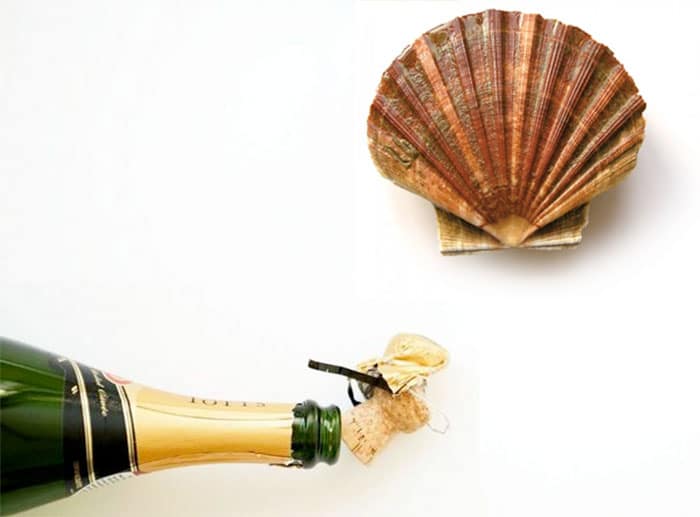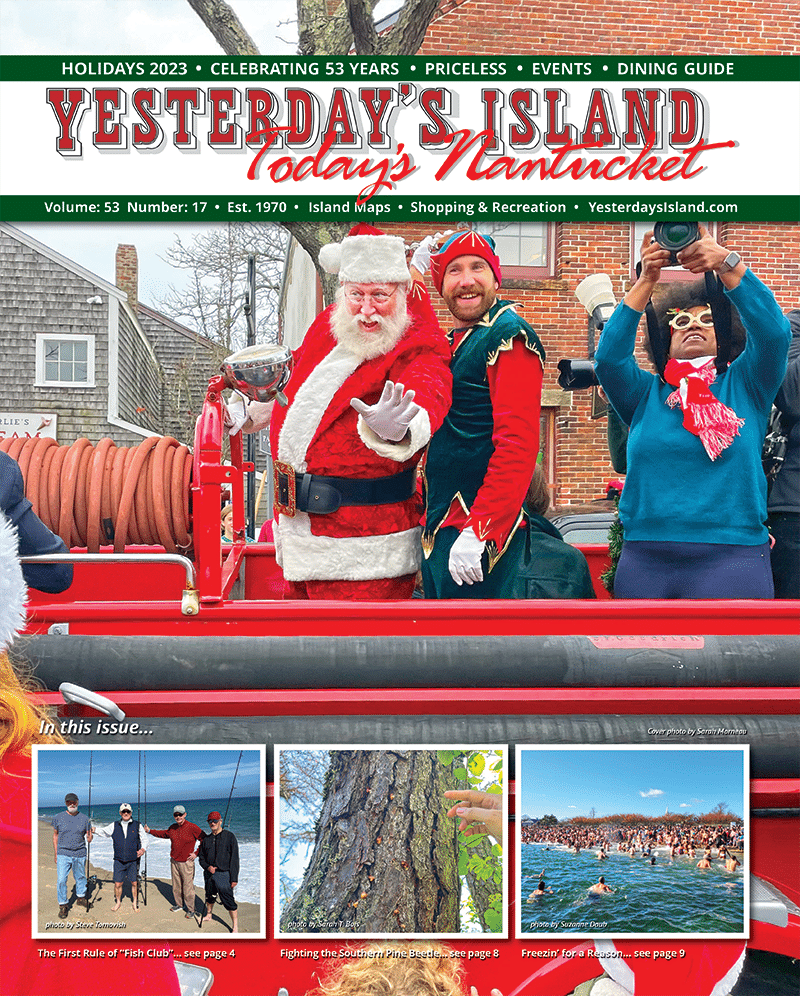• by Carri L. Wroblewski, BRIX Wine Shop •
Opening day on Nantucket is sacred. We wait all year long for it—and, no, I’m not talking about baseball. As the calendar lets go of the last days of September we impatiently await the start of October—the beginning of family scalloping season.
I’ve had my fair share of Nantucket Bay Scallops. Whether it was while seated at a tony table in a Manhattan restaurant or cooked at home, excited by my purchase at the fish monger where I was tempted by him touting, “Nantucket Bay Scallops—the first of the season.” But it wasn’t until last year, my maiden voyage to the sea, that I truly understood the real sweetness of our island morsels.
Suited up in my borrowed hunter green waders we drove around in what seemed like circles, down unknown dirt paths to parts of the island I never knew existed. When we arrived at our secret destination, I hopped out of the pickup truck, barely able to keep my excitement corked. We unloaded our push rakes and view boxes, both of which I had little clue how to use.
My first lesson came before we even touched the water. The seasoned Nantucketer, willing to give up her time to teach us bay scalloping novices how to harvest these sea treasures, turned to me and said, “Before we go any further I have to set something straight. We are not going “scAlloping” we are going “scOlloping.” With my midwestern accent not doing me any favors, she was serious and made me repeat “scolloping” three more times before we proceeded to the water.
I remember that particular day being picture perfect—warm with the Indian summer sun beating down upon us. Not entirely sure what to expect, we slithered into the water rakes in hand. After a quick tutorial on what to do, off we went to collect our bivalves.
Lesson number two: It’s not always as easy as it looks. There’s a reason why it’s a tradition. Why people have “their” special push rakes or a hand crafted gadget someone made them years ago to help harvest their allowed weekly bushel. I raked and raked with little success until I used the view box and a homemade tool whipped up by our guide’s boyfriend, and then it became a game. And a fun one at that. One by one I filled up my basket. By the time we were finished, the sun had set and my waders were filled with cold water. I didn’t care. It was one of the most memorable days I had last year. And it was only then that I fully comprehended not only the sweetness of the scallop, but also the deliciousness of the experience.
The next night we ate the fruits of our labor—scallops nestled among ribbons of fresh pasta lightly kissed with butter. My initial bite of that gift from the sea left me speechless. How could something so small, so delicate, deliver that much flavor? To commemorate our success we opened a bottle of Louis Roederer Brut Premier Champagne.
It’s no surprise that the Nantucket Bay Scallop, celebrated and sought after, should so easily pair with another of life’s great pleasures…bubbles. Our bay bivalves with their sweet, succulent nuances marry perfectly with the complexity of Champagne or the simple freshness of a sparkling wine.
Knowing that I was writing this article, a friend loaned me a great book called Scallop Season by Jim Patrick and Rob Benchley. According to them, approximately 400 scallop species exist yet only 50 of them are fished commercially. But what’s most interesting is that just like wine, scallops acquire their taste based on where they come from. In wine terms, the French word terroir refers to the unique flavors that a growing region imparts on the grapes grown there. The same goes for the sea. Playing off the word terroir, the term merroir was coined, referring to the specific flavors imparted by a particular location or area within the sea. So, not surprisingly, just like Champagne from France is going to have a different flavor profile than a sparkling wine from California, so, too, will a northern bay scallop taste different than a sea scallop.
But, back to those bubbles. The Roederer Champagne paired perfectly that night with our pasta dish peppered with the rich texture of the scallops. Made from 40% Pinot Noir, 40% Chardonnay, and 20% Pinot Meunier, it offered up a creaminess with each sip and its refreshing acidity cleaned the palate for the next bite.
Though Champagne is fantastic, sometimes the occasion calls for a simpler sip, but you don’t have to sacrifice your bubbles. There are plenty of delicious sparkling wines to fit the bill depending on the preparation of your bay scallops. A scallop ceviche (raw fish and shellfish “cooked” in an acidic citrus juice, usually lime or lemon) is one of the freshest ways to indulge in your prized harvest. Grab a bottle of Jean Francois Merieau’s Bulles, a French sparkler hailing from the Loire Valley. A blend of Chenin Blanc and Chardonnay its zippy acidity and subtle hints of citrus will help those scallops melt in your mouth.
Another one of my favorite sparkling wines to pair with scallops comes from northern Italy. Ca’ del Bosco Franciacorta Cuvée Prestige is a delicious alternative to Champagne. Crafted from a blend of Chardonnay, Pinot Bianco, and Pinot Nero it comes from 134 different vineyard parcels. An extremely versatile wine, pair a glass of this with sautéed scallops.
I’m excited for scalloping this year. Not only does the word “scolloping” roll off my tongue now, I even have my own homemade view box. From my glass of bubbles to yours…cheers!



